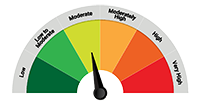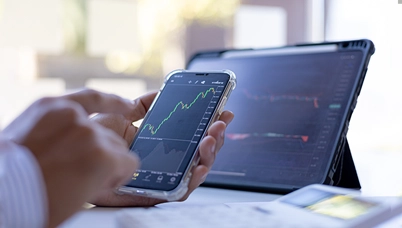Debt monthly view for August 2022
Posted On Friday, Sep 09, 2022
Indian bond yields have been falling (bond prices rising) since mid-June 2022. The 10-year government bond yield peaked at 7.6% in June. It fell to 7.45% by June end, 7.32% by July end, 7.24% by August end, and at the time of writing on September 8, 2022, it is trading around 7.08%.
The decline in bond yields started with a clamour of global growth slowdown and falling commodity prices. An expectation of India’s inclusion in the global bond index also added to the positive market sentiment.
Crude oil has come down sharply over the past two months on fears of a global economic slowdown reducing oil demand. The brent crude oil price fell from ~USD 112/barrel at the June end to ~USD 89/barrel on September 8, 2022.
The decline in commodity prices eased some of the concerns about inflation. The CPI inflation eased to 6.71% in July 2022 vs over 7% inflation during April – June 2022 period. Sequential month-over-month inflation has been easing across many components of inflation suggesting the producers have slowed down the pace of price increases.
Assuming no further inflationary shock, CPI inflation for the 12 months forward period should average around 6%. The RBI may draw comfort from inflation coming down to 6% or below in the near term while taking a more medium-term view to achieving the 4% inflation goal.
This would allow the RBI to slow down the pace of rate hikes going forward. We expect the RBI will hike the repo rate by another 25 basis points in the upcoming MPC (monetary policy committee) meeting to be held at end of September. We maintain our call of repo rate peaking around 6% by end of this year or early 2023.
During the last month, liquidity surplus in the banking system came down below Rs. 1 trillion owing to heavier than usual cash withdrawals from banks during August, RBI’s selling of foreign exchange (which in turn takes away INR from the banking system), and build-up of government cash balance during the month.
The core liquidity surplus which excludes the government’s surplus cash balances and is considered a more durable source of liquidity has also been coming down rapidly for the last six months. The core liquidity surplus was around Rs. 9 trillion in March 2022, it fell to ~Rs. 6 trillion by June 2022, and, in August core liquidity is slightly above Rs. 4 trillion.
With the early arrival of the festival season, we expect cash demand to increase further in the September to December period. The RBI may also have to sell foreign exchange to fill the gap in the balance of payments. This, along with the double-digit credit growth will further reduce the core liquidity surplus.
Core liquidity surplus may fall below Rs. 2 trillion by October 2022. Assuming a running government balance of around Rs. 1-2 trillion, banking system liquidity will become neutral to the deficit during Q4 of 2022.
Given the economic growth is still below potential, RBI might want to keep the banking system liquidity in surplus of around 1% of NDTL. Thus, there is a reasonable possibility of RBI adding liquidity through OMO purchases of government bonds in Q4 2022 and Q1 2023. If this happens, this should be supportive of the demand-supply dynamics in the bond markets.
Although the domestic environment has improved, the external environment has turned more hostile to the Indian bond markets.
The 10-year US treasury yield has moved up during the month from a bottom of around 2.6% to ~3.3%. At the Jackson hole symposium, the US Fed Chairman Jerome Powell delivered a hawkish speech suggesting rate hikes will continue and higher rates will be maintained for long period.
Powell’s speech was a big pushback to the part of the market which was pricing for a rate cut by the Fed on the first sign of economic weakness. Market expectations of terminal US Fed Fund rate moved up to 4% vs 3.5% a fortnight back.
Similar hawkishness can be seen in the commentary from other central banks in that part of the world including the European Central Bank, Bank of Canada, and Bank of England. All are hiking their respective policy rates at a pace of 50-75 basis points every meeting.
This is not a conducive environment for foreign investors to invest in emerging economies. Thus, we do not expect large inflows from foreign investors immediately even if India gets inducted into the global bond indices though it would be sentiment positive for the domestic investors and might extend the bond rally for some more time.
Going ahead, the bond market should continue to track the movement in crude oil prices and the domestic demand-supply balance.
We expect the 10-year government bond yield to continue to trade in a broader range of 7.1%-7.5%. The short end of the curve will likely move higher with Overnight rates moving closer to 6% by the year-end.
Considering the duration-accrual balance, the 3-5 year segment remains the best play as core portfolio allocation. The long end of the yield curve is vulnerable to an adverse demand supply shock. However, any mispricing in this segment can be exploited through tactical positioning from time to time.
We suggest investors with a 2-3 years holding period should consider adding their allocation to dynamic bond funds to benefit from higher yields on medium to long-term bonds.
Dynamic bond funds have the flexibility to change the portfolio positioning as per the evolving market conditions. This makes dynamic bond funds better suited for long-term investors in this volatile macro environment.
Investors with shorter investment horizons and low-risk appetites should stick with liquid funds. With an increase in short-term interest rates, we should expect further improvement in potential returns from investments in liquid going forward.
Since the interest rate on bank saving accounts are not likely to increase quickly while the returns from the liquid fund are already seeing an increase, investing in liquid funds looks more attractive for your surplus funds.
Investors with a short-term investment horizon and with little desire to take risks should invest in liquid funds which own government securities and do not invest in private sector companies which carry lower liquidity and higher risk of capital loss in case of default.
| Name of the Scheme | This product is suitable for investors who are seeking* | Riskometer |
| Quantum Dynamic Bond Fund An Open-ended Dynamic Debt Scheme Investing Across Duration. A relatively high interest rate risk and relatively low credit risk. | • Regular income over short to medium term and capital appreciation • Investment in Debt / Money Market Instruments / Government Securities |  Investors understand that their principal will be at Moderate Risk |
The Risk Level of the Scheme in the Risk O Meter is based on the portfolio of the scheme as on August 31, 2022.
| Potential Risk Class Matrix – Quantum Dynamic Bond Fund | |||
| Credit Risk → | Relatively Low | Moderate (Class B) | Relatively High (Class C) |
| Interest Rate Risk↓ | |||
| Relatively Low (Class I) | |||
| Moderate (Class II) | |||
| Relatively High (Class III) | A-III | ||
Disclaimer, Statutory Details & Risk Factors:The views expressed here in this article / video are for general information and reading purpose only and do not constitute any guidelines and recommendations on any course of action to be followed by the reader. Quantum AMC / Quantum Mutual Fund is not guaranteeing / offering / communicating any indicative yield on investments made in the scheme(s). The views are not meant to serve as a professional guide / investment advice / intended to be an offer or solicitation for the purchase or sale of any financial product or instrument or mutual fund units for the reader. The article has been prepared on the basis of publicly available information, internally developed data and other sources believed to be reliable. Whilst no action has been solicited based upon the information provided herein, due care has been taken to ensure that the facts are accurate and views given are fair and reasonable as on date. Readers of this article should rely on information/data arising out of their own investigations and advised to seek independent professional advice and arrive at an informed decision before making any investments. Mutual fund investments are subject to market risks read all scheme related documents carefully.Please visit – www.QuantumAMC.com to read scheme specific risk factors. Investors in the Scheme(s) are not being offered a guaranteed or assured rate of return and there can be no assurance that the schemes objective will be achieved and the NAV of the scheme(s) may go up and down depending upon the factors and forces affecting securities market. Investment in mutual fund units involves investment risk such as trading volumes, settlement risk, liquidity risk, default risk including possible loss of capital. Past performance of the sponsor / AMC / Mutual Fund does not indicate the future performance of the Scheme(s). Statutory Details: Quantum Mutual Fund (the Fund) has been constituted as a Trust under the Indian Trusts Act, 1882. Sponsor: Quantum Advisors Private Limited. (liability of Sponsor limited to Rs. 1,00,000/-) Trustee: Quantum Trustee Company Private Limited. Investment Manager: Quantum Asset Management Company Private Limited. The Sponsor, Trustee and Investment Manager are incorporated under the Companies Act, 1956. |
Related Posts
-

Debt Monthly for December 2025
Posted On Tuesday, Dec 02, 2025
As we approach the end of the calendar year, we find ourselves at a pivotal moment, with the market split on the likelihood of an upcoming rate cut.
Read More -

Debt Monthly for November 2025
Posted On Tuesday, Nov 04, 2025
October 2025 in a Nutshell: Monetary Policy and Demand–Supply
Read More -

Debt Monthly for October 2025
Posted On Friday, Oct 03, 2025
September was a pivotal month for fixed income markets, both globally and domestically.
Read More



